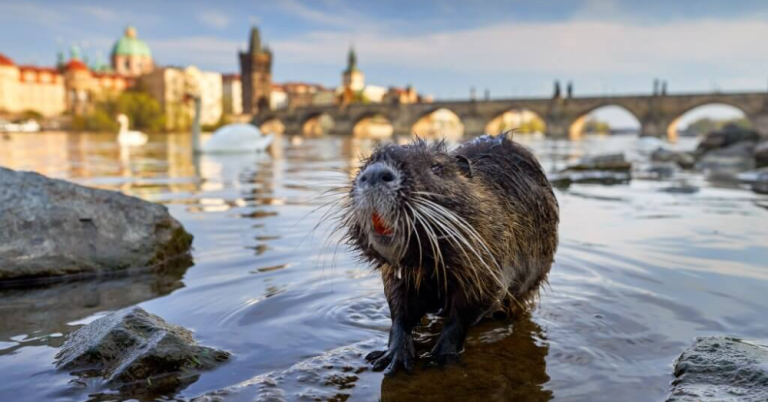Wild animals living in cities can transmit diseases and parasites to pets and humans, or in extreme situations attack a person. Photo credit: MENDELU.
Brno, April 18 (BD) – Scientists from the Mendel University Faculty of Forestry and Woodwork (LDF MENDELU) will study wild animals in cities, both terrestrial and water-bound, from May until December 2025.
Wild animals living in cities can transmit diseases or parasites to pets and humans, or in isolated cases, even attack people. The output of the two-and-a-half-year project will be instructions for cities on how to solve these situations and how to communicate them to the public. MENDELU will be the main coordinator of the research project, with the joint cooperation of the city police, trapping service, hunters and camera traps.
They will also collect samples for the Masaryk University Faculty of Science, who will evaluate the health status and occurrence of diseases in animals caught or found dead in Brno. In addition, SocioFactor s.r.o. will focus on a sociological survey of the public’s relationship to animals in the city and their attitudes, to develop possible ways of solving conflict situations.
“The project concerns medium-sized and large mammals, so we are looking for animals from the size of a marten to a wild boar,” said Jakub Drimaj from the Institute of Forest Protection and Hunting at LDF MENDELU. “In addition to wild animals that purposefully venture out of the wild into the city or its outskirts, we will also focus on species that have become accustomed to the presence of humans and have become permanent residents of the city, such as foxes, badgers, martens or hares, as well as domestic and wandering species, such as domestic cats.”
According to Drimaj, wild animals in cities are often looking for alternative food sources or safety from predators and hunters. Scientists will also focus on the aquatic environment and non-native species bound to water, such as river nutrias, muskrats, and northern raccoons.
The goal is to develop guidelines that cities can use to address and solve common issues, and communicate them to the general public, along with instructions on what to do in case of encountering these animals and how to approach them.
“Contact between wild and domestic animals and humans always brings certain risks that need to be dealt with and require an adequate response, for which we would like to help the public administration and interested parties,” explained Drimaj.
One of the greatest risks brought by wild animals is the possible transmission of diseases and parasites, which can infect pets and humans. “Mammals are possible carriers of Lyme disease and tick-borne encephalitis through ticks, and foxes are the main reservoir of the tapeworm, which causes serious liver disease,” explained Drimaj. In addition, their state of health can be affected by pollutants that the animal may encounter in landfills or in abandoned factories.
Another risk is of collisions with vehicles, which in the worst cases can kill either the animals or cause severe damage to cars. Animals can also cause disruption by emptying dustbins and trash cans in cities, or damage parks and flower beds with trees and plants. In some cases, animals have been known to tear up whole cemeteries.
“Last but not least, we should not forget attacks from wild animals on people and domestic animals. These cases occur exceptionally, but I would put them in the category of rare situations that occur when the animal feels a threat to its safety, when, for example, in a remote part of the city park, a sow will defend her piglets from a dog running around freely,” concluded Drimaj.







